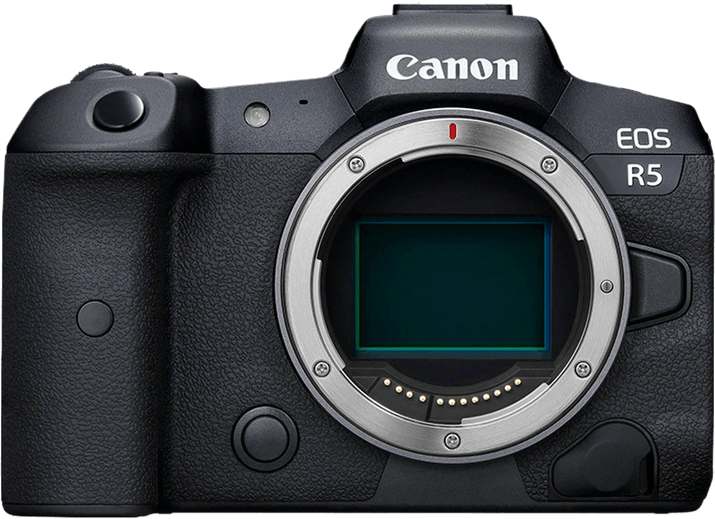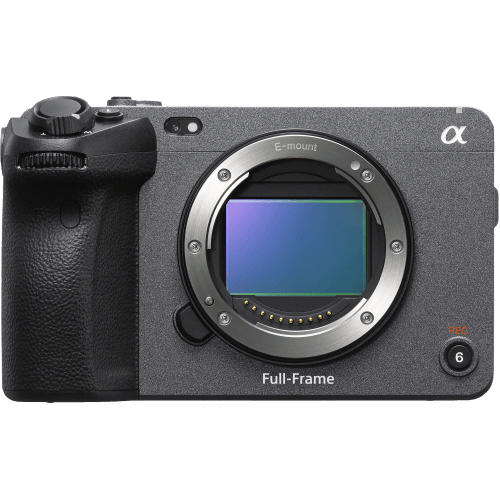Canon EOS R5 vs Sony FX3 Comparison
Canon EOS R5

Sony FX3

The Canon EOS R5 takes the lead with a score of 86/100, while the Sony FX3 trails behind at 75/100. Both cameras are mirrorless and were released in 2020 and 2021, respectively. They share similarities in size and weight, with the Canon measuring 138 x 98 x 88mm and weighing 680g, and the Sony at 129.7 x 77.8 x 84.5mm and 640g.
The Canon EOS R5 outperforms the Sony FX3 with its higher score, reflecting its superior quality. The higher launch price of $4499 for the Canon also suggests a more premium product compared to the Sony’s $3900 price tag.
However, the Sony FX3 is not without its merits. Its lighter weight and more compact size may appeal to users who prioritize portability and ease of handling. Despite its lower score, it still offers reliable performance at a more affordable price point.
Taking these factors into consideration, the Canon EOS R5 is the better camera in terms of overall quality and performance, while the Sony FX3 caters to those who value convenience and affordability.
Canon EOS R5 vs Sony FX3 Overview and Optics
The Canon EOS R5 outperforms the Sony FX3 in optics, scoring 88/100 compared to the Sony’s 71/100. Both cameras share several key features, including a full-frame CMOS sensor, image stabilization, and compatibility with their respective lens mounts (Canon RF for the R5 and Sony E for the FX3).
The EOS R5’s superior performance can be attributed to its higher megapixel count of 45, which allows for greater detail and resolution in images. Additionally, its shooting speed of 20 frames per second (fps) is double that of the FX3’s 10 fps, enabling faster action capture and improved performance in sports or wildlife photography. The R5’s sensor also has a slightly higher DXOMARK score of 95, compared to the FX3’s 94, indicating marginally better image quality.
On the other hand, the Sony FX3’s lower megapixel count of 12.1 can be advantageous in low-light situations, as larger pixels capture more light and reduce noise. However, this benefit is somewhat offset by the R5’s superior sensor performance. The FX3’s Bionz XR processor is highly capable, but it does not outshine the R5’s Digic X processor in terms of overall performance.
In conclusion, the Canon EOS R5 offers superior optics performance with its higher megapixel count, faster shooting speed, and slightly better sensor quality. The Sony FX3 may have an edge in low-light situations, but it does not surpass the R5 in other aspects. Ultimately, photographers seeking the best optics performance should opt for the Canon EOS R5.
Canon EOS R5 vs Sony FX3 Video Performance
The Canon EOS R5 triumphs over the Sony FX3 in terms of video capabilities with a score of 100/100, while the FX3 scores 91/100. Both cameras share some similarities in specs, such as a maximum video frame rate of 120fps and built-in time-lapse functionality. However, there are areas where the R5 outperforms the FX3, and some aspects in which the FX3 has an advantage.
The Canon EOS R5 excels in video resolution and dimensions, offering a stunning 8K resolution with maximum dimensions of 8192 x 4320. This feature allows for capturing incredibly detailed and sharp footage, which is highly beneficial for professional videographers and filmmakers who require top-notch quality.
On the other hand, the Sony FX3 provides a maximum video resolution of 4K and dimensions of 3840 x 2160. While this is still considered high-quality and suitable for most video projects, it falls short compared to the R5’s 8K capabilities. However, the lower resolution can be advantageous for users who need smaller file sizes and faster processing times.
Despite the differences in resolution, both cameras perform well in terms of frame rate and time-lapse functionality. The 120fps frame rate ensures smooth motion capture, and the built-in time-lapse feature allows for creative and dynamic video content.
In comparing the video capabilities of the Canon EOS R5 and Sony FX3, the R5 stands out with its superior 8K resolution and dimensions, making it the better choice for professional videographers seeking the highest quality footage. The FX3, although not as powerful in resolution, remains a viable option for those prioritizing smaller file sizes and quicker processing. The shared features of 120fps frame rate and time-lapse functionality ensure both cameras deliver excellent performance in these areas.
Canon EOS R5 vs Sony FX3 Features and Benefits
The Canon EOS R5 outperforms the Sony FX3 in features with a score of 87/100, compared to the Sony FX3’s 83/100. Both cameras share several common specifications, including a touchscreen, flip screen, Wi-Fi, and Bluetooth connectivity. Neither camera has GPS functionality.
The Canon EOS R5 stands out with its larger screen size of 3.2 inches and a higher screen resolution of 2,100,000 dots. This means the R5 offers a more detailed and expansive viewing experience for users when composing shots or reviewing images and videos. The improved screen resolution also contributes to the camera’s overall higher feature score.
The Sony FX3, despite its lower feature score, still offers a respectable 3-inch screen and a 1,440,000-dot resolution. This camera remains a strong contender, especially for users who prefer a more compact size without sacrificing essential features. While the FX3 may not have the same level of screen performance as the EOS R5, its other features are on par with its competitor.
In comparing the Canon EOS R5 and the Sony FX3, the R5 takes the lead in terms of features, primarily due to its superior screen size and resolution. However, the Sony FX3 remains a viable option for those who prioritize compactness and do not require the highest screen specifications. Both cameras offer a range of valuable features, making them suitable choices for various photography and videography needs.
Canon EOS R5 vs Sony FX3 Storage and Battery
The Sony FX3 outperforms the Canon EOS R5 in storage and battery, scoring 76/100 compared to the R5’s 68/100. Both cameras share similarities, such as having two memory card slots and accepting SD/SDHC/SDXC (UHS-II compatible) cards. Additionally, both cameras offer USB charging capabilities.
The FX3’s edge lies in its battery life, which delivers 600 shots compared to the R5’s 320 shots. The Sony FX3 uses the NP-FZ100 battery type, contributing to its longer battery life. Furthermore, the FX3 accepts CFexpress Type A cards, providing faster write speeds and larger storage capacities.
On the other hand, the Canon EOS R5 also accepts CFexpress cards, which are compatible with both cameras. However, the R5’s battery life falls short, with only 320 shots using the LP-E6NH battery type.
Taking these factors into account, the Sony FX3 emerges as the superior choice in terms of storage and battery performance. The Canon EOS R5, while offering similar storage options, lags behind in battery life, making it less suitable for extended shooting sessions.
Canon EOS R5 vs Sony FX3 – Our Verdict
Are you still undecided about which camera is right for you? Have a look at these popular comparisons that feature the Canon EOS R5 or the Sony FX3:

